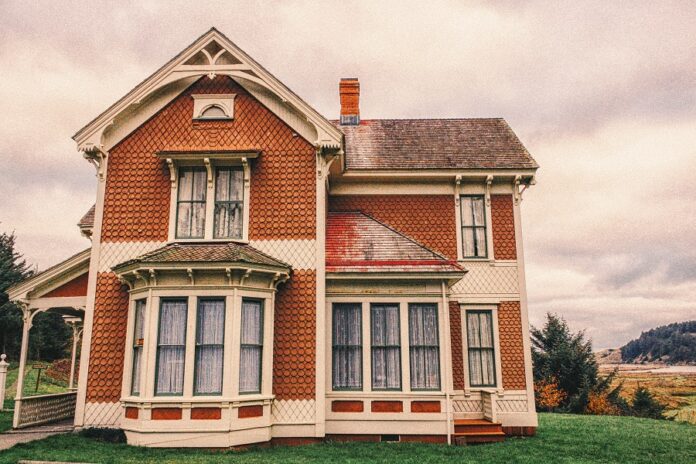
Due to their sturdy construction and timeless aesthetic, post and beam homes have been a popular option for homeowners for centuries. However, with any type of construction, it’s important to consider the longevity of the building. How long can a post and beam home last, and what can impact its durability?
In this article, we’ll explore the history of post and beam construction, the materials used, and the maintenance required to ensure they last for generations to come. Whether you’re considering building a new post and beam home or already own one, understanding the lifespan of these structures is essential to making informed decisions about your investment.
Average Lifespan of Post and Beam Homes
The lifespan of a post and beam home largely depends on the materials used, the construction methods employed, and the level of maintenance provided. On average, a well-built post and beam home can last for several generations, with some even lasting for hundreds of years.
The key to longevity is regular upkeep and proper maintenance to protect the wood and other materials from weather, pests, and decay.
Post and beam homes can last for several centuries if maintained properly. However, the lifespan of these homes largely depends on the quality of materials used and the level of maintenance they receive.
For instance, homes made from high-quality hardwoods like oak, maple, or cherry tend to last longer than those made from softwood varieties such as pine or spruce. Additionally, a regularly inspected and maintained home can withstand the test of time and last for generations.
It’s worth noting that post and beam homes can be vulnerable to environmental factors such as moisture, insects, and rot. Moisture can cause wood to expand and contract, leading to structural damage over time.
Insects such as termites and carpenter ants can also weaken the wood, causing the structural integrity of the home to be compromised. Therefore, protecting your post and beam home from these threats is important.
Factors That Contribute to the Longevity of Post and Beam Homes
First and foremost, the quality of the materials used in construction plays a significant role. For example, durable, rot-resistant wood such as cedar or redwood and high-quality hardware and fasteners can help prevent decay and corrosion over time. Skilled craftsmanship is also crucial, as poorly executed joinery or inadequate support structures can lead to structural issues down the line.
Regular maintenance, including cleaning, sealing, and repainting, can help protect the wood from moisture and insects, two common enemies of post and beam homes. Finally, proper design and construction that accounts for climate and natural elements in the area can help ensure the home can withstand the test of time.
Environmental Factors The Impact Post and Beam Homes
Exposure to excessive moisture, sunlight, wind, and extreme temperatures can all contribute to the deterioration of the wood and other materials used in any construction project. In humid environments, for example, moisture can lead to rotting and mold, while in drier climates, the wood may be more prone to splitting and cracking.
Harsh sunlight can cause fading and damage to finishes, while strong winds can cause structural damage. Regular maintenance, such as sealing and painting, can help protect the wood from environmental stressors and prolong the home’s life.
Environmental stress such as weather, pests, and natural disasters can significantly impact the longevity of post and beam homes. Insects such as termites and carpenter ants can also cause damage, eating away at the wood and weakening the structure.
The Importance of Maintenance and Repairs
Regular maintenance and repairs are crucial for ensuring the longevity of post and beam homes. Regular inspections, cleaning, and upkeep can also help prevent small issues from turning into larger, more expensive problems down the line. In general, homeowners should have their post and beam homes inspected at least once a year. Inspectors will look for signs of damage such as cracks, warping, or rot and provide a checklist of items to have fixed or replaced.
A study published by the International Association of Certified Home Inspectors found that well-maintained homes can last up to 20 years longer than homes that are not well-maintained. The study highlights that timber framing and structural systems are known for their exceptional longevity, with some lasting over 100 years. Those made from logs can have a lifespan of between 80 and 200 years.
If maintained properly, post and beam homes can last up to several hundred years, while neglected or poorly maintained homes may last a fraction of that time. Therefore, homeowners can protect their investment and ensure the longevity of their post and beam home by prioritizing regular maintenance and repairs.
The Future of Post and Beam Homes
The future of post and beam homes looks promising as more homeowners seek out sustainable, eco-friendly building materials and methods. Post and beam construction is a time-honored tradition that offers a beautiful, rustic aesthetic, superior durability, and longevity.
Additionally, advancements in technology and materials are making it easier and more affordable than ever to build a post-and-beam home that is energy-efficient and environmentally friendly.
According to the National Association of Home Builders, post and beam homes can be more energy-efficient than traditional stick-built homes. Structural insulated panels (SIPs) can be added to them, which provides strong insulation, resulting in significant cost savings for homeowners.
As the demand for sustainable, resilient homes grows, post and beam construction will likely become an increasingly popular choice for those seeking a long-lasting, environmentally responsible dwelling.
Examples of Post and Beam Homes That Have Lasted for Decades
Numerous examples of post and beam homes have lasted for decades, even centuries, thanks to their sturdy construction and regular maintenance. One notable example is the Saltbox House in Massachusetts, built in the 17th century and still stands today.
Other examples include the Timberline Lodge in Oregon, built in the 1930s, and the Fairbanks House in Massachusetts, built in the late 1600s. These homes have stood the test of time thanks to high-quality materials, skilled craftsmanship, and regular upkeep and maintenance.
To Wrap It Up
Post and beam homes are known for their longevity and durability, with many examples standing the test of time for decades or even centuries. The use of high-quality materials, skilled craftsmanship, regular maintenance and repairs, and appropriate design and construction all contribute to the longevity of these homes.
Environmental factors such as weather and pests can pose a threat, but homes can last for generations with proper care and attention post and beam.
As sustainability and eco-friendliness become increasingly important considerations in construction, the future looks bright for post and beam homes. It offers not only timeless beauty but also energy efficiency and resilience. Thus, whether you are building a new home or considering purchasing an existing post and beaming home, you can rest assured that your investment will last for years with the right care.
Read Also: 5 Qualities To Looking For When Buying a Home





























































